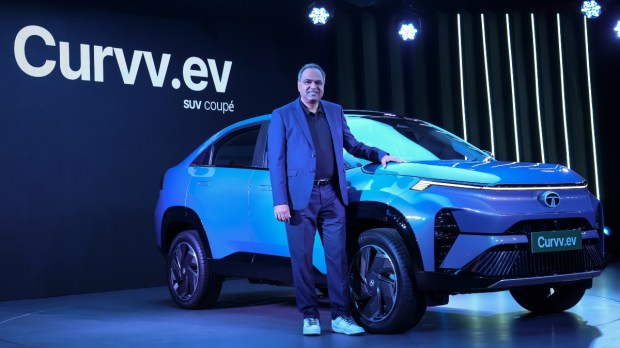On the sidelines of Tata Motors’ latest launch Curvv, Chandra provided insights about EV penetration in India going forward, drop in demand of small cars.
Tata Motors has unveiled its latest offering in the fast growing mid-SUV segment, the Tata Curvv SUV Coupe. Speaking on the sidelines of the launch, Shailesh Chandra, Managing Director, Tata Motors Passenger Vehicles and Tata Passenger Electric Mobility said he is confident of achieving the 30% EV penetration target by 2030.
Here are excerpts of the conversation:
What is your outlook for EV sales for the second half of FY25 and share of EVs as percent of overall FY25 sales?
We have a long-term direction of attaining 30% plus EV penetration by 2030, and directionally, we are moving closer to that target. There is no specific H2 target. As you know the PV industry is growing at a slow pace. As a result, EVs in that space will also grow accordingly. We have a series of new launches in the pipeline and we are optimistic that our growth rate will be much better than the industry.

The Curvv gets the 1.5 diesel engine. You did not rule out the probability of offering diesel on other products also. Is there a rethink in terms of the Tata Motors diesel strategy?
We never exited diesel. We always said that diesel will remain popular in SUVs and we will offer it till diesel is viable. People love paying more money for a diesel car still, given that it has better fuel efficiency the drive experience is punchier. So as long as there is demand, we will exist, in each of the segments in which diesel is still relevant.
Is there a drop in sales of smaller cars, elaborate on the demand dynamics, especially for the Punch?
Punch is the highest selling vehicle in the country between April to July.This is the highest growing segment in the country, even more than mid-size SUV segment, in the first four months of the fiscal. The growth rate of the Punch segment, driven by “Punch” is nearly 70% , in a market which is growing at 2-3%. Rural demand is likely to remain strong on the back of steady monsoon.So that is actually a tailwind for the auto industry.
The Tata Motors board approved the demerger of PV and the CV businesses – if you could explain the synergies for Tata Motors.
The synergies between the CV and PV business are diminishing and we are seeing increasing synergy between JLR, PV, EVs – all three entities. Therefore it made sense to demerge and rather focus on these synergies. So we clearly see that there’s a lot of joint working in the world of electrification. We see a lot of synergy between JLR and Tata Motors in the new electronic architecture, which is emerging in the world of pure EV architectures. Therefore this is a very logical deerger that is happening at the right time, I would say.
Are hybrids a viable option at the current juncture?
It is a 20-year old technology. Not even comparable at a juncture where the industry has leap-frogged to EVs. It should not be compared with EVs especially because for hybrids, 100% of the source of energy is coming from petrol. CNG is significantly cleaner than hybrids. Those who want to sell, they might continue selling. We don’t want to sell. With 12% electric penetration, we have significant headroom. It is a two-decade old technology which found relevance because somebody was late in joining the move to electric and would have to face a penalty. So they have to come up with a hybrid. We don’t want to discuss.
Discover the latest in the auto world with new cars and new bikes … Read More , explore upcoming cars in India, and find your perfect match with cars under 5 lakh, 10 lakh or 15 lakh. Stay updated with the latest auto news and the rise of electric vehicles.
This article was first uploaded on August seven, twenty twenty-four, at thirty-six minutes past nine in the night.
